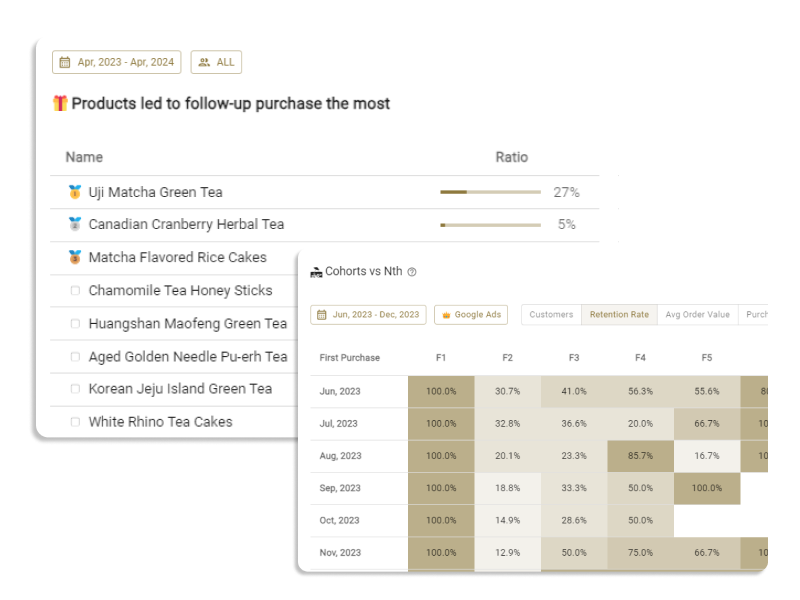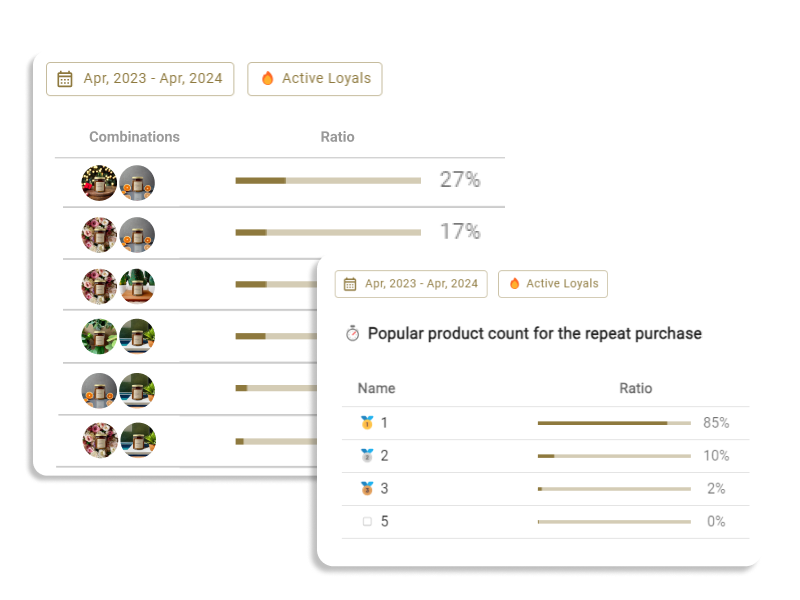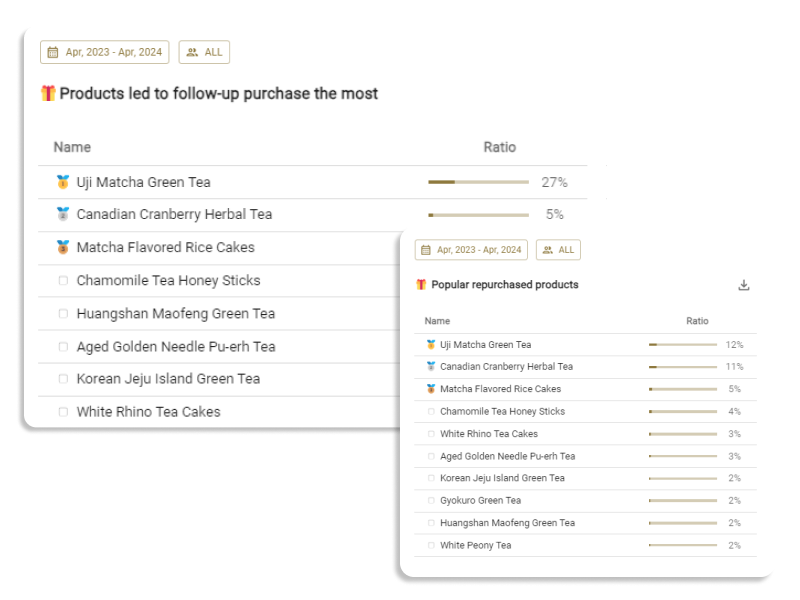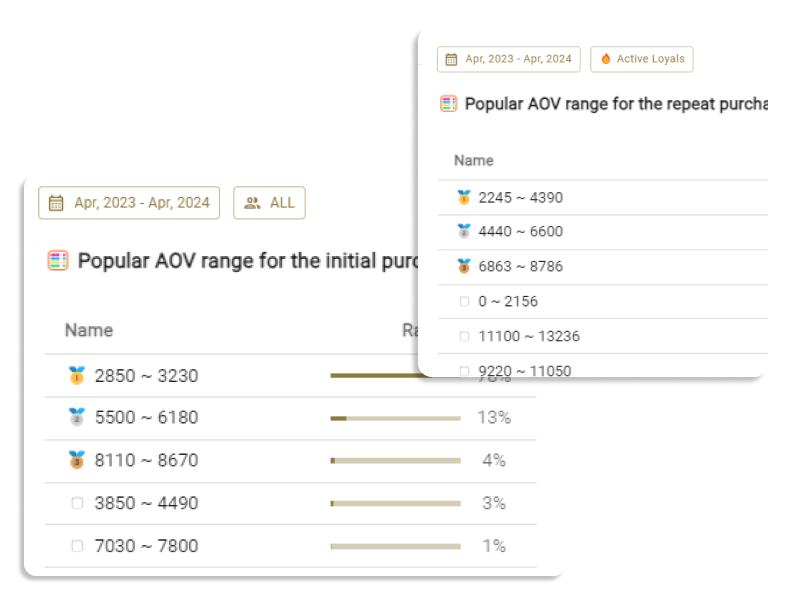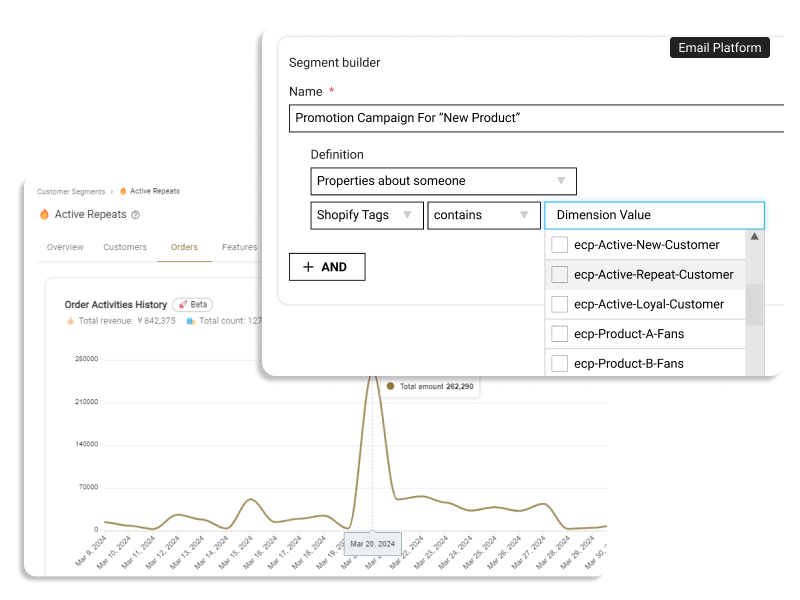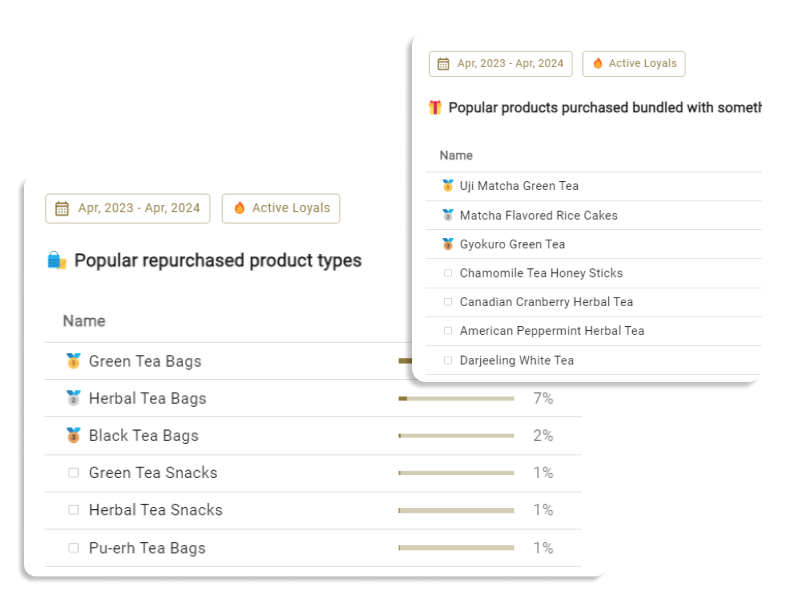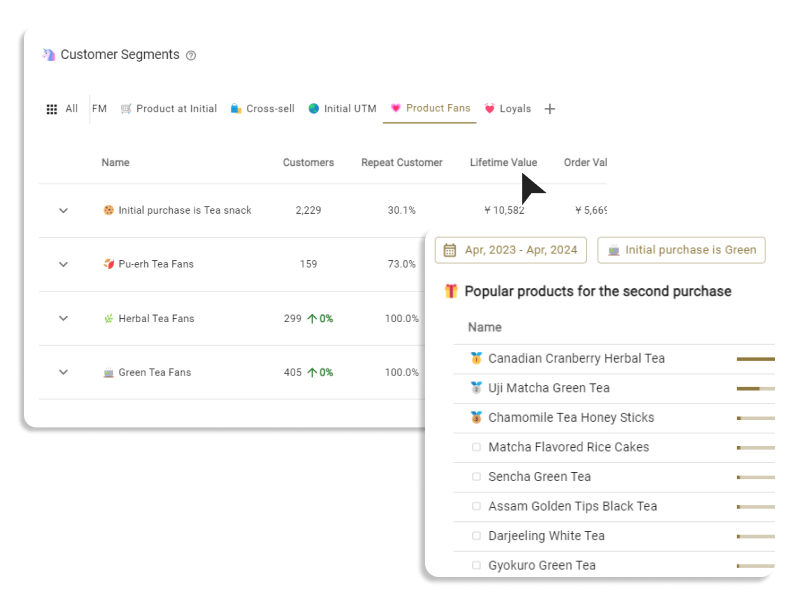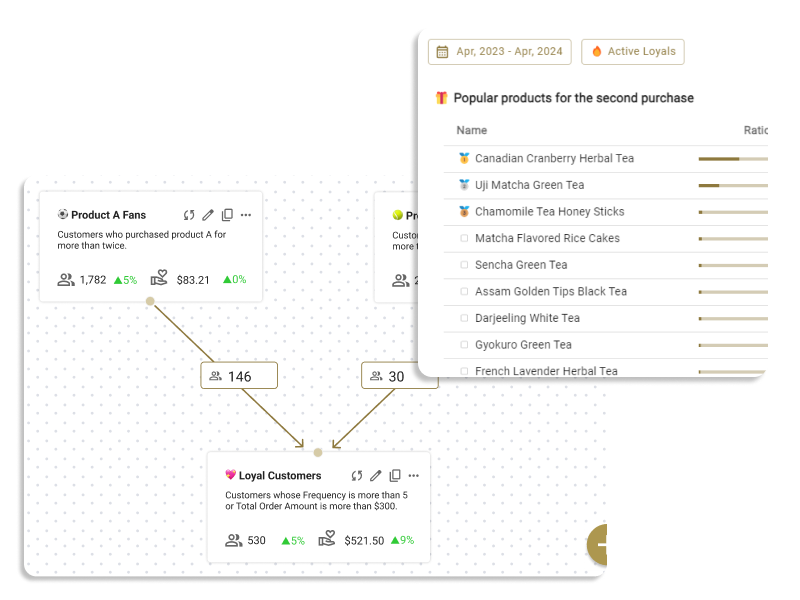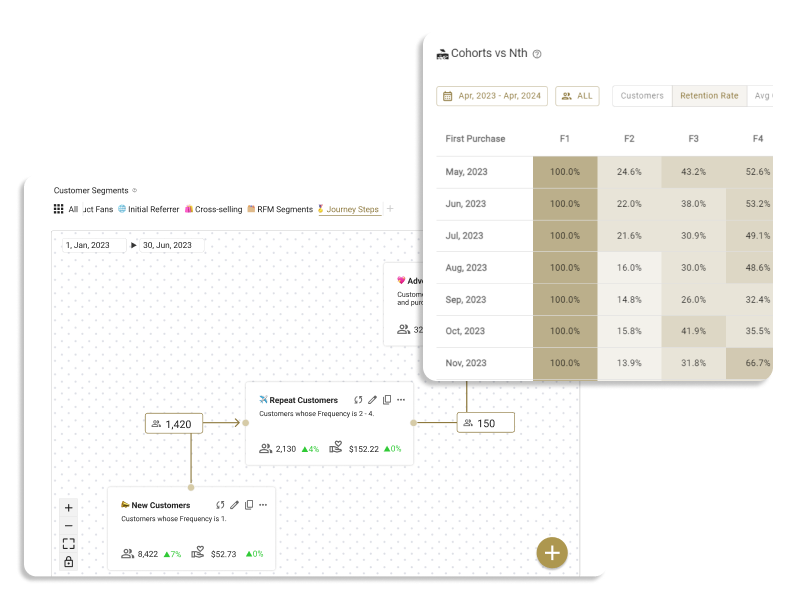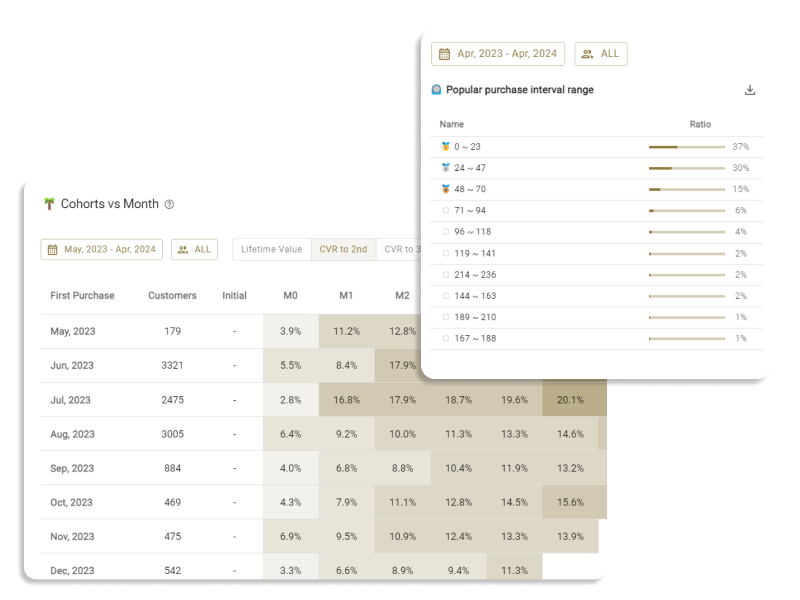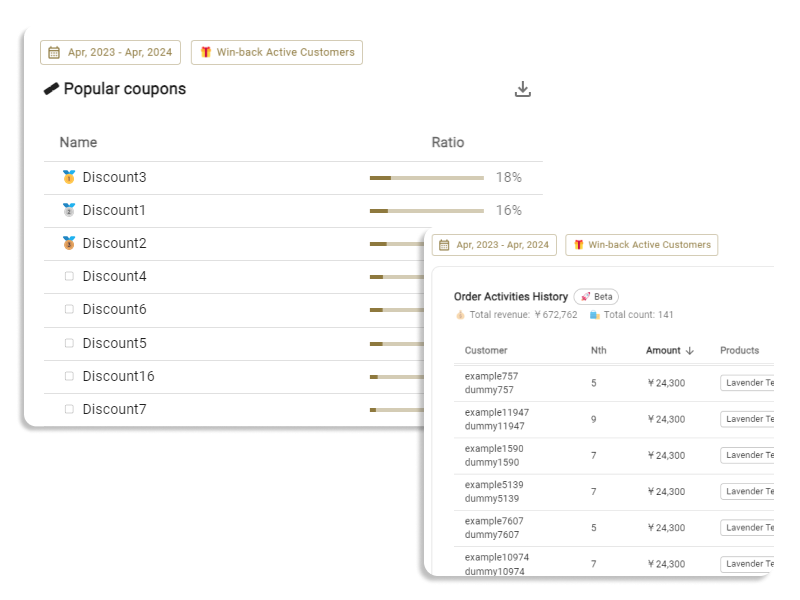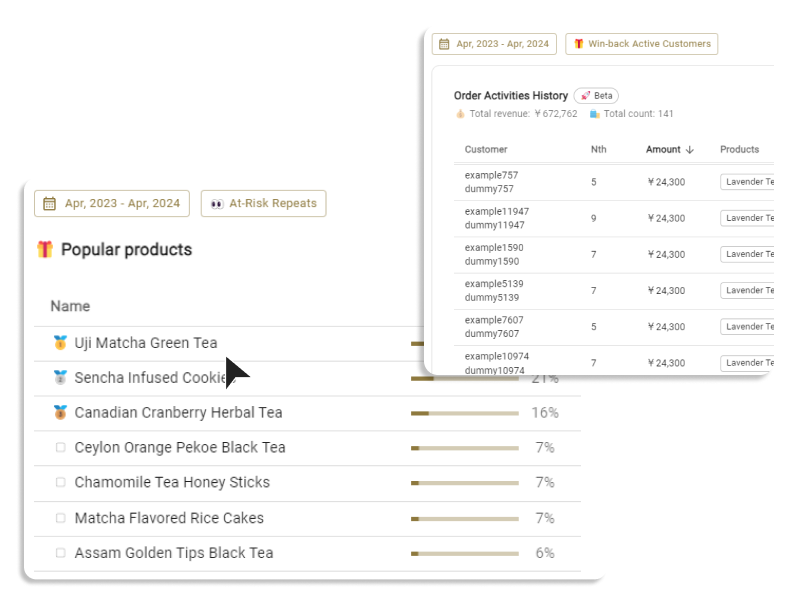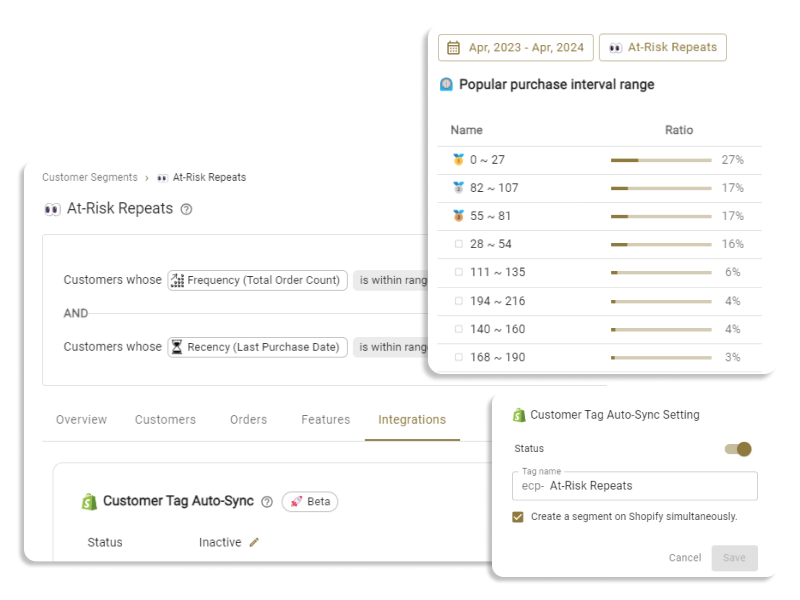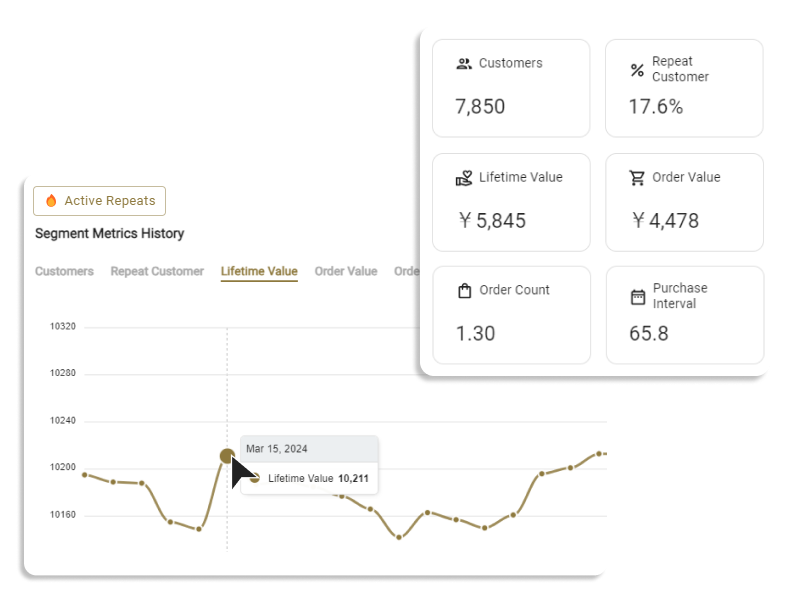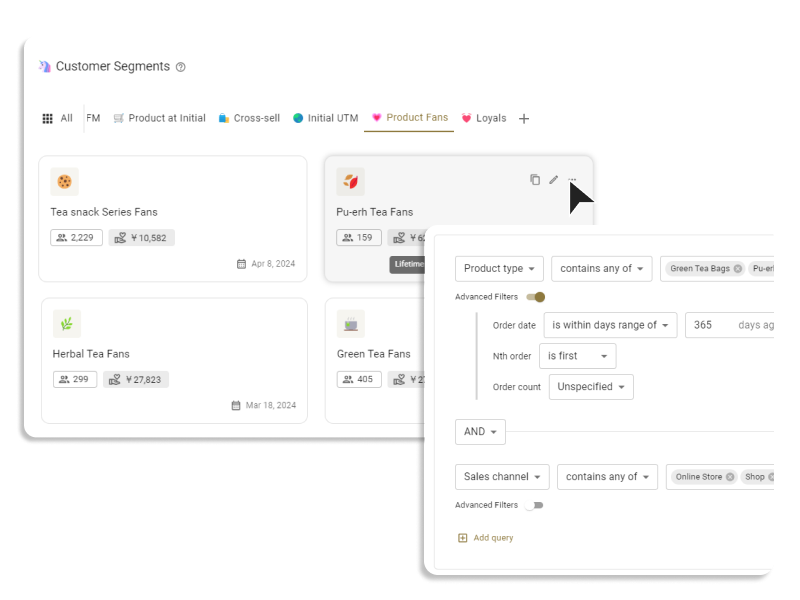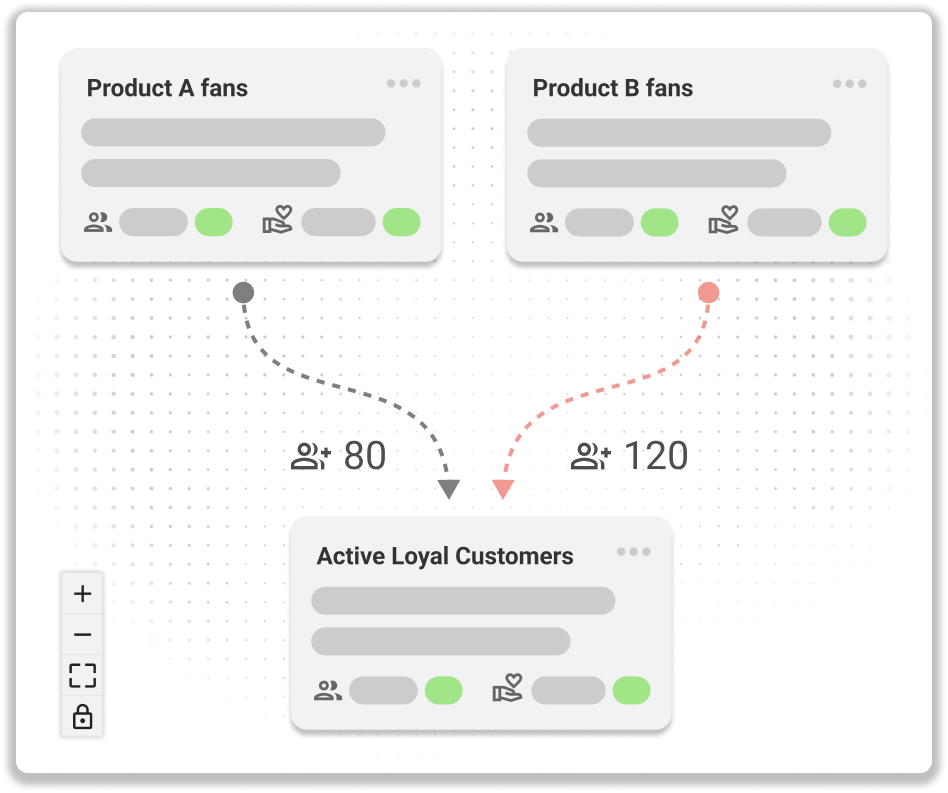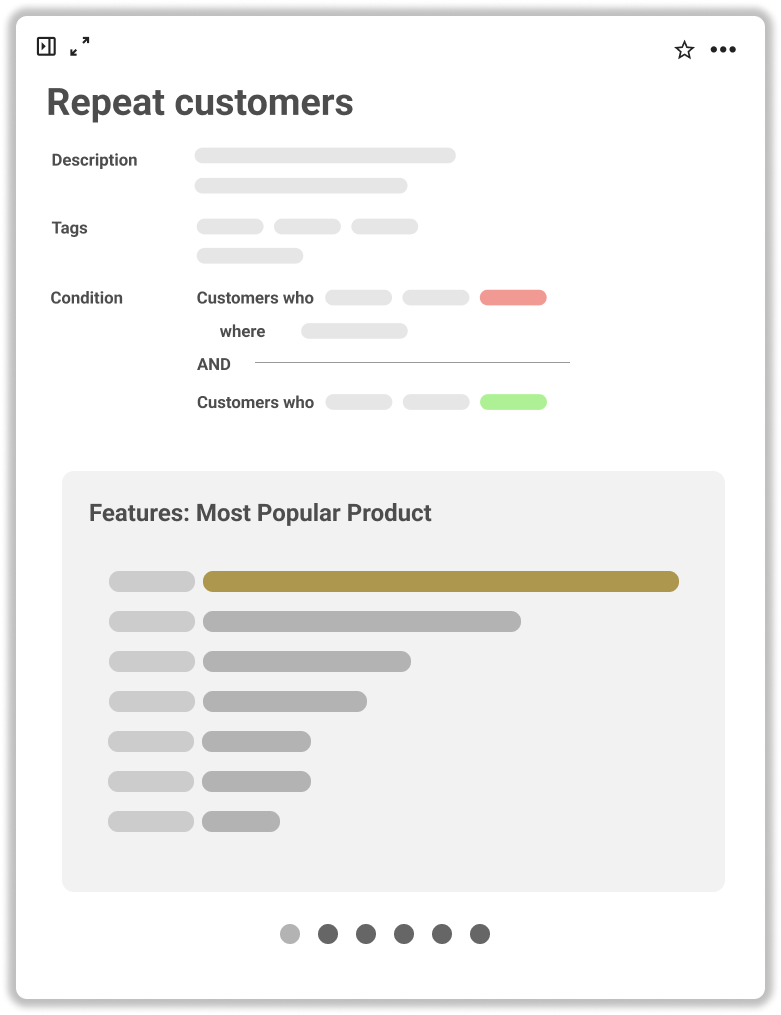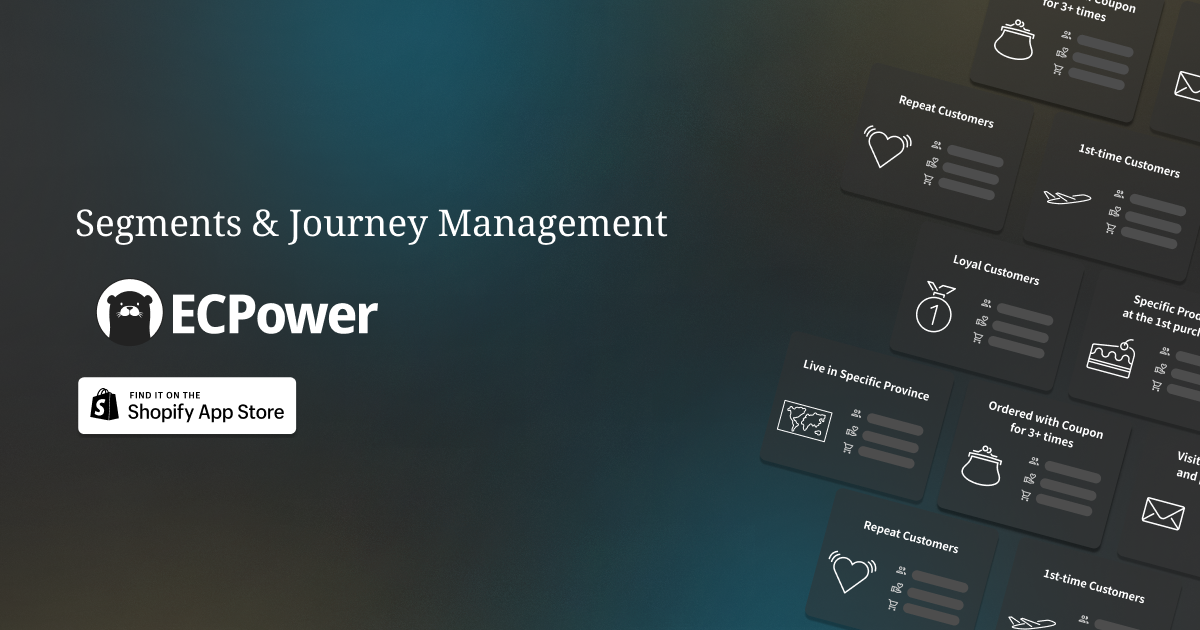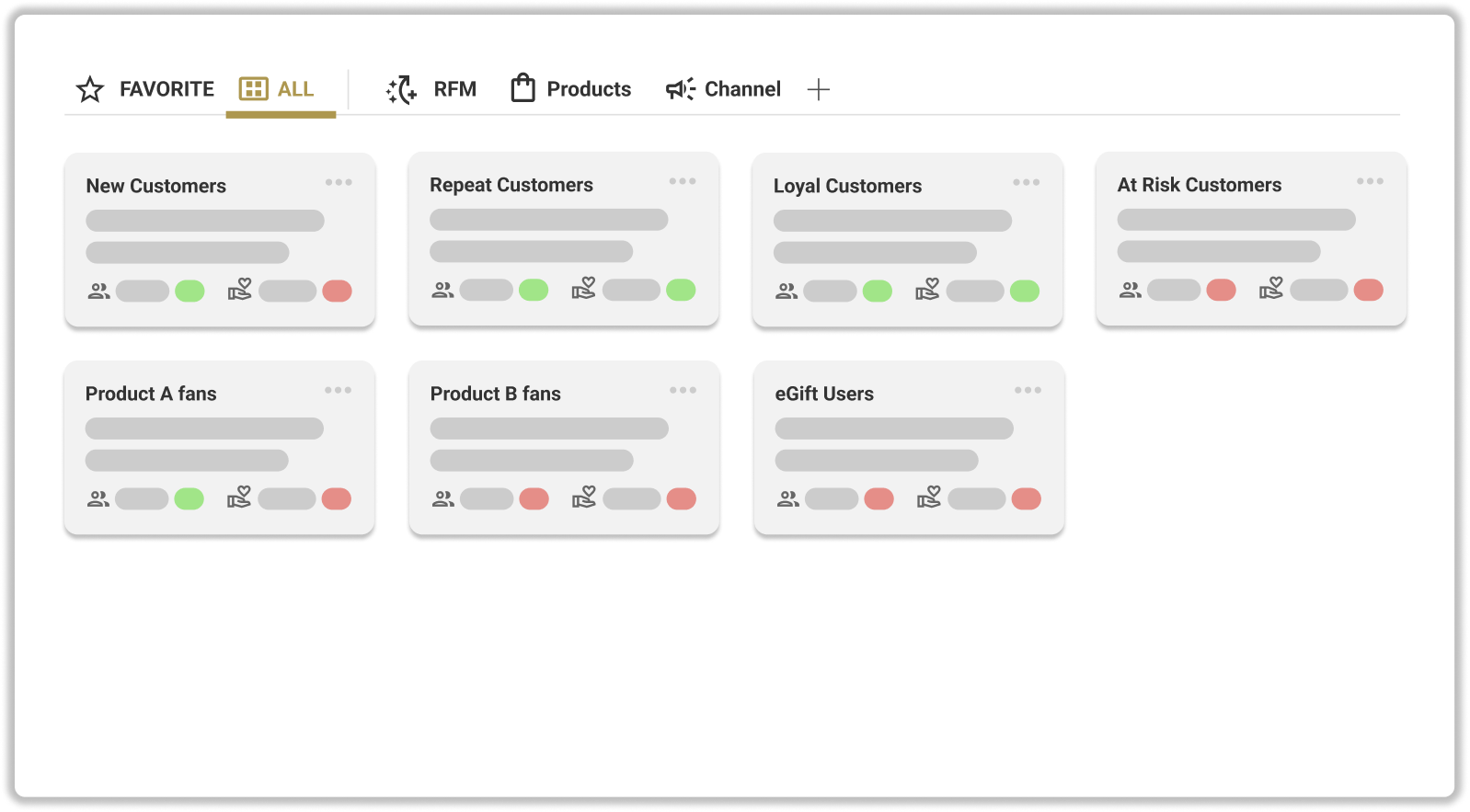
Core Specifications
This function reports on the past orders of currently segmented customers, showcasing the top ten characteristics.
It's designed to provide insights into the question, "Who are our customers?" by focusing on the number of customers and their proportional representation within the overall segment.
The default analysis covers all historical order data of the segment's members. By setting a specific period, you can pinpoint characteristics based on orders within that timeframe, allowing insights into trends such as popular products, average spend, and key customer acquisition channels over the last month.
Report Categories
- Product preferences: Highlights which types of products, categories, and tags are favored by customers.
- Source of visits: Identifies which acquisition channels, referral sources, and UTM parameters are most effective.
- Order methods: Delves into the preferred sales channels, order tags, and coupon usage among customers.
- Order date/time: Analyzes when customers are most likely to make purchases, broken down by month, week, and time of day.
- Customer stats/properties: Examines metrics like spending amounts, purchase frequencies, and intervals between purchases, as well as customer tags and demographics.
Variations
For those on our paid plan, additional detailed reports are available, including insights on the first purchase, second purchase, repeat purchases, and the most recent purchase, providing a comprehensive view of customer behavior.
- First Purchase: You can see the features of each customer's first order.
- Second Purchase: You can see the features of each customer's second order. Ratio % is calculated with repeat customer count, not overall customer count in the segment.
- Repeat Purchases: You can see the features of all orders after the second purchase of each customer. Ratio % is calculated with repeat customer count, not overall customer count in the segment.
- Latest Purchase: You can see the features of the latest order of each customer.
Report Definitions
FAQ
How can I check the features reports for overall store?
You can create new segment for 'all customers' - with condition of Purchase Count >= 1, then check features.
How do you define the bin / bucket size for the 'distribution' report? Can I change it?
We employ a statistically validated method to construct bins/buckets tailored to your data, ensuring optimal fit and accuracy. Currently, the customization of bucket sizes is not available.
What's the limitation of 'past period data', when using filters for order period?
It's essential to understand that customer segments are dynamic, with daily changes in their composition. A straightforward example is the "new customer" segment, defined by a purchase count of one. Once customers make their second purchase, they automatically exit this segment.
Our 'features' reports focus exclusively on the current makeup of each segment. Thus, individuals who were part of a segment in the past but aren't as of the reporting date won't be included, even if the analysis period is set retrospectively. The essence of these reports is to shed light on the present customer base.
As of now, our platform doesn't support historical segment features analysis. To keep track of segment features changes over time, we recommend regularly downloading reports. We're eager to hear your suggestions and feedback to enhance our service further!


